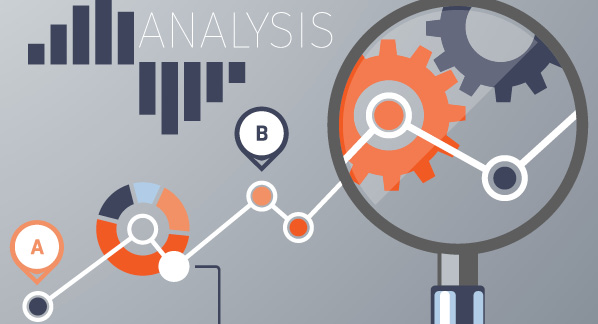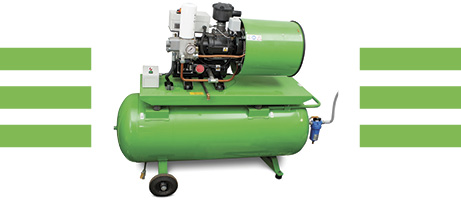How Do You Know When You’re Ready for Electro-Hydraulic Implementation?
The integration of electronics and hydraulics has grown dramatically in recent years, but not everyone has jumped on the bandwagon. For those considering implementing electro-hydraulic (EH) solutions, the key question often boils down to: “How do you know when you’re ready?” To answer that question, those considering EH implementation should consider the benefits available, evaluate areas that can best capitalize on those benefits, and develop a game plan for implementation.
What Are the Benefits?
Much as electronics have become more commonplace in automobiles, the use of electronics to control the operation of pumps, valves, and other hydraulic components has introduced numerous potential benefits. EH integration offers increased efficiency, enhanced diagnostics, improved maintenance, and solid return on investment for those incorporating the latest technology.
With onboard computers and electronics, hydraulic and mechanical systems can reach unprecedented levels of efficiency. On mobile equipment, an engine constantly running at full speed is generally not as efficient as an engine that regulates speed based on conditions. Software can monitor operations and adjust engine speed as needed, resulting in potential savings in fuel and extended engine life.
Diagnostics have also improved greatly with the advent of electronic controls. Integrated EH systems can help to determine when a failure occurs, as well as potentially prevent future failures. For example, a fuse box in a controller area network, or CAN-Bus, system can notify the equipment operator exactly which fuse has blown. This greatly reduces troubleshooting time. Other diagnostic examples include sensing and evaluation of engine information, hydraulic system health, and the condition of the electronic control system.
The enhanced diagnostics can translate into more informed maintenance decisions. An EH-integrated system can sense machine uptime and indicate the need for routine maintenance based on the history of the component or system. For example, if a particular machine function requires grease after every 500 cycles, the electronic control system can track the operational data and signal when the maintenance is due.
The more advanced diagnostic and maintenance opportunities can also help end users realize a return on their investment. While hydraulic components with onboard electronics are generally more expensive than their conventional counterparts, cost savings can be achieved through improved reliability, resulting in greater machine uptime and reduced maintenance repair costs. By sensing and reacting to an abnormal condition, a costly system failure can often be prevented.
What Process Areas Might Benefit?
For original equipment manufacturers (OEMs) and others considering EH integration, some key questions to ask are: Where is more efficiency needed? What are the bottlenecks in the current operation? For example, a manually operated machine with on/off switches and levers might be limited in adjusting for various throughputs. A proportional control, such as a joystick, might allow more flexibility and consideration of multiple parameters.
In manufacturing settings, the types of products being manufactured often affect whether or not additional EH integration might be beneficial. We asked Tom Price, president of Price Engineering, a Hartland, Wis.-based distributor of Eaton products and EH integrator, where he has seen integration prove successful. Products that require tighter tolerances, faster cycle times, and those being built in cleaner environments are often good candidates for EH integration, according to Price. With higher performance equipment, electronics are key to achieving that level.
The increased efficiency of EH systems can also translate into increased output.
For example, in a manually controlled rock-crushing application, the machine operator must be constantly monitoring and adjusting the in-feed conveyor speed to maximize throughput while preventing the crusher from jamming. With electronic control, this operation can be handled automatically by monitoring speeds and pressures. This results in improved performance and minimal operator interaction.
Developing a Game Plan
The opportunities for implementing EH systems can often be found in the various parameters that can be monitored and controlled by advanced electronics. System integrators should be aware of the different sensors available (e.g., temperature, pressure, flow, position, incline, and acceleration), as well as control options, and evaluate where additional automation can be introduced.
Price also suggests identifying the requirements and key goals for EH systems and components. Machine cycle time, ease of use and maintenance, safety and total cost are good examples. OEMs should ask the question: Who are the stakeholders? and use the stakeholder team to establish what the machine should do and how it should work.
OEM research of possible EH integration areas should involve the voice of the customer, according to Price. He added that OEMs and integrators should involve the customers in the brainstorming process.
Software development factors also need to be considered. Will it be a proprietary system owned by the software developer, or an open system that can be modified down the road by someone other than the developer? As an OEM, will you manage the development or have someone else do it? OEMs can often benefit with assistance during development and integration, according to Price.
OEMs should also consider who will own the intellectual property rights to custom software and technology. In Price’s experience, the integrator often owns the rights, but customer IP ownership can be a natural progression.
Staffing and other resources also need to be evaluated. End users need the right skill sets and environment. If a situation requires additional wiring and cables, personnel with the proper wiring experience are key. And when seeking tight tolerances, a clean environment is crucial.
Once goals, development options, and resources have been evaluated, Price advises to introduce EH integration in stages and establish priorities. Start simple and prioritize. Develop a platform that takes care of the highest need first. And expect some growing pains along the way, notes Price. EH integration does not happen automatically, so OEMs should take it one step at a time and recognize it as an investment.
Future Opportunities
Even with all the recent gains of EH systems, opportunities for growth remain. Open platforms, such as Eaton’s Pro-FX, have provided an accessible starting point for OEMs to participate in automation development. To help expand EH integration capabilities, Eaton is constantly developing additional programming options and pre-built function blocks.
Collaboration among component manufacturers, such as Eaton along with distributors, OEMs, and other end users, will be key to advancing EH technology, according to Price. He sees the collective input from all groups guiding the direction for future integration. By working closely together during the application design phase, Eaton and its customers can create successful systems that capitalize on the numerous potential benefits of electro-hydraulic integration.
For more information: Michael Lindemann is a software engineer at Eaton Hydraulics. Visit www.eaton.com/DMC







